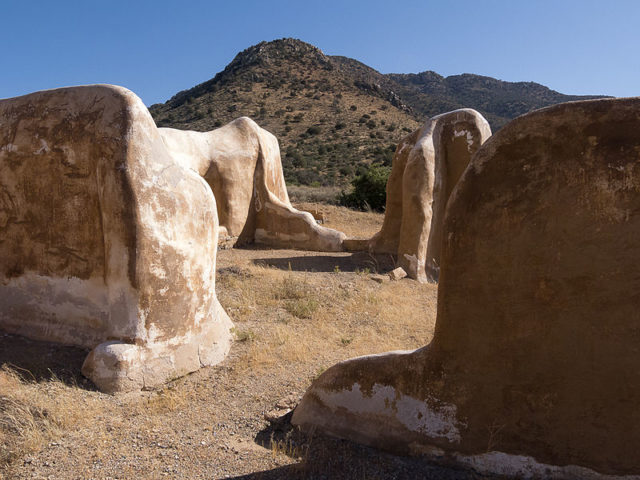Fort Bowie came into being following a series of disputes between the Chiricahua Apaches and the California Column, a volunteer Union command, which culminated in the Battle for Apache Pass in 1862.
The trigger for this battle, and one of the key contributors to the decades-long Apache Wars, can be traced to the Bascom Affair. It began in January 1861 with a raid by a group of Coyotero Apache on the land of a man named John Ward. They stole some of his cattle and kidnapped his 12-year-old son, Felix.

Ward quickly informed Lt. Col. Morrison at Fort Buchanan, who in turn ordered Lt. George Nicholas Bascom to find the raiders and return the boy. However Lt. Bascom failed to do so and never found the boy nor the Natives responsible for that matter. According to Ward, the party was seen headed towards the Chiricahua Mountains, which is what led the U.S. Army to believe that the Chiricahua Apache were to blame.

This is when Lt. Bascom, along with over fifty men, traveled to Apache Pass, where they joined up with Sgt. Daniel Robinson. Bascom arranged to meet the leader of the Chokonen band of Chiricahua, A-da-tli-chi, or Cochise, to negotiate the return of the boy. Cochise knew nothing of the raid or the whereabouts of Felix Ward, but the soldiers refused to believe his word and captured Cochise and members of his family as hostages until everything stolen from John Ward was returned.

Cochise managed to free himself and escape. He captured a group of innocent wagoners to bargain for the release of his family, but eventually all the hostages wound up dead. Many years later, it emerged that Felix Ward had been adopted into a White Mountain Coyotero family. He took the name of Mickey Free and became an Apache scout and bounty hunter for the U.S. Army in 1872.

More clashes between the two sides followed, becoming increasingly violent until, in 1862, the Battle of Apache Pass was fought. It lasted for a full month. After this, the California Column decided to dig in and create a fort in order to protect the Apache Pass, and by extension the Apache Spring, which was an important water source back in those days. At first, the fort did not have the appearance of a true fort but rather resembled a military camp.

Some years later, in 1868, a more substantial fort was erected some 500 yards east of the original camp. It featured officers quarters, a granary, infantry barracks, hospital stables, and pretty much everything a fort needs. For 30 more years, the Apache would fight with the U.S Army. And this fort was in the middle of it all. Everything ended once Geronimo surrendered in 1886; this meant that the Chiricahua were banished from the grounds of both Alabama and Florida.

The fort was used for eight more years before it was officially abandoned in 1894. Only ruins and barely standing adobe walls surrounded by tall grass survive today.

Eerie lights are reported by hikers around fall and early winter. According to legend, these lights are ghosts of those who died in or around the fort. People describe these lights as either blue or white.

A number of people also claim to have heard what sounded like a woman crying, while others report the sound of a steam engine hissing. However, investigators have debunked these supernatural stories. The natural explanations for these phenomena are that the ghostly lights are nothing more than headlights of cars in the distance and even flashlights of other hikers.

According to the investigators, the crying and hissing sounds sounds that the hikers heard came from the local spring. Many people still come to this historic place to witness both the fort and the Apache Pass where hundreds of men once fought so fiercely.
A 1958 film, Fort Bowie starring Ben Johnson, was made about this fort which depicts the conflict between the Apache and the U.S Army.
